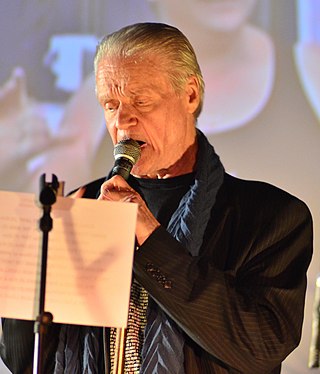
Kim Vincent Fowley was an American record producer, songwriter and musician who was behind a string of novelty and cult pop rock singles in the 1960s, and managed The Runaways in the 1970s. He has been described as "one of the most colorful characters in the annals of rock & roll", as well as "a shadowy cult figure well outside the margins of the mainstream".

James Boyd Greenspoon was an American keyboard player and composer, best known as a member of the band Three Dog Night.

Volume 3: A Child's Guide to Good and Evil is the fourth album by the American psychedelic rock band The West Coast Pop Art Experimental Band (WCPAEB), and was released on Reprise Records in May 1968. By the time the group commenced recording Volume 3, guitarist Danny Harris had excused himself from the WCPAEB, reducing their numbers to a trio. As with the WCPAEB's earlier work, the album saw the band continue to blend psychedelic influences and complex studio techniques, and was marked by a bizarre fusion of innocence and malice in the band's lyrics. Volume 3 featured the WCPAEB's most ambitious music to date, and the striking cover art of John Van Hamersveld, yet it failed to sell in sufficient copies to chart nationally. In more recent times, the album has been considered the band's most accomplished work and a masterpiece of the psychedelic genre.
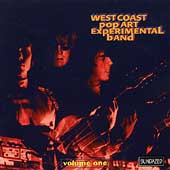
Volume One is the first album recorded by the psychedelic rock band the West Coast Pop Art Experimental Band. It was first released in 1966 on the small FiFo Records label. It was reissued in both compact disc and vinyl in 1997 by Sundazed. The album features covers of pop classics such as Richard Berry's "Louie, Louie" and the Kinks' "You Really Got Me". The songs mellow out into a blues/folk style with covers of Bob Dylan songs.

Volume 2 (Breaking Through) is the third album by the American psychedelic rock group, the West Coast Pop Art Experimental Band, and was released in October 1967 on Reprise Records (R 6270 mono, RS 6270 stereo). At the time of recording, Michael Lloyd was not present so the group was reduced to Bob Markley and the Harris brothers, with additional uncredited contributions from Ron Morgan. On the back of original LP release appears 'Breaking Through' and the declaration: "Every song in this album has been written, arranged, sung and played by the group. No one censored us. We got to say everything we wanted to say, in the way we wanted to say it".

Part One is the second album by the American psychedelic rock group The West Coast Pop Art Experimental Band, and was released in February 1967 on Reprise Records. It features compositions by Bob Johnston, Frank Zappa, Baker Knight, P.F. Sloan and Van Dyke Parks with input from studio drummer Hal Blaine. It has a song most well known as "Morning Dew" composed by Bonnie Dobson with arrangement by Danny Harris. This is the first album with input from guitarist Ron Morgan.

Where's My Daddy? is the fifth album by the American psychedelic rock group, the West Coast Pop Art Experimental Band, and was released in 1969 on Amos Records, which was owned by Jimmy Bowen. Amos Records signed them after Reprise Records dropped the band from their label following the commercial failure of their first three albums. It features compositions by Danny Harris, Michael Lloyd and Shaun Harris with lyrics by Bob Markley. On the original pressing, Lloyd's contributions were not noted on the back cover as a type of punishment by Markley for recent disagreements with each other. However, promotional copies do show Michael Lloyd's contributions noted on the back cover.
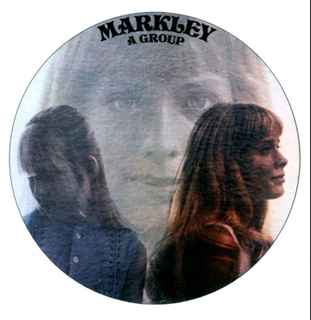
Markley, A Group is the sixth and final album by the American psychedelic rock group, the West Coast Pop Art Experimental Band, and was released in 1970 on Forward Records, owned by Mike Curb. In this case, the album was released under another group name, Markley A Group, as decided by the group owner, Bob Markley. It features compositions by Danny Harris, Michael Lloyd and Shaun Harris with lyrics by Bob Markley. The content is simple and soft, reminiscent of the band's earlier work. Lyrically, however, the band was continuing the trend set by Where's My Daddy?, in which they describe class resentment, paranoid psychedelia, and an unsettling interest in young girls. Although Shaun Harris creates compositions for the album, he only appears on "Outside/Inside". After this album, like those before it, failed to achieve success, the band ceased to exist.
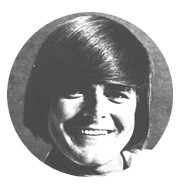
Robert H. Markley was an American singer-songwriter and record producer who co-founded the psychedelic rock band, The West Coast Pop Art Experimental Band, in the late 1960s, and became one of the most controversial figures that emerged from the era.
Michael Jeffrey Lloyd is an American record producer, arranger, songwriter and musician. After working with Mike Curb, Kim Fowley and others in the mid-to-late 1960s on musical projects including the West Coast Pop Art Experimental Band, and Steven Spielberg's first short film, Amblin', he became a producer of such teen idol pop stars as the Osmonds, Shaun Cassidy and Leif Garrett in the 1970s.
St. John Green was an American psychedelic rock band who released one self-titled LP, produced by Kim Fowley and Michael Lloyd, in 1968. The album has been described as "by turns frightening, dark, funny and stupid as it reeks of bad trip freak outs in matte black painted rooms with no furniture lit only by a single red bulb and burning cigarette ends.... weirdly dark and epic."

"Smell of Incense" is a song by the American psychedelic rock band the West Coast Pop Art Experimental Band, written by Ron Morgan and Bob Markley, and was released as a single on Reprise Records in 1968.

The Grains of Sand were an American garage rock band formed in Los Angeles, California in 1965. For a period, the group exerted a promising presence in Los Angeles's music scene, releasing three singles in their recording career, the second of which was produced by Kim Fowley. Much of the band's material found on their first two releases have since been compiled on several compilation albums, including Pebbles, Volume 1, and is cited by critics as classics of the garage rock genre.

The West Coast Pop Art Experimental Band Companion is a compilation album by the American psychedelic rock band the West Coast Pop Art Experimental Band (WCPAEB), and was released on Sunbeam Records on June 7, 2011. The album is a collection of demos, tracks that appear on early singles, and rare material that derive mostly from the group members' side-projects before, during, and after the WCPAEB's recording career.
The Fire Escape was an American psychedelic rock band formed in San Francisco, California, in 1967. Existing mainly as a studio group composed of unknown session musicians, the band was masterminded by record producer Kim Fowley and Michael Lloyd. The project produced one album called Psychotic Reaction, which contained mainly cover versions of popular songs from the era. It is reported that Sky Saxon of the garage rock band, the Seeds and Mars Bonfire of Steppenwolf, played on some of the tracks.
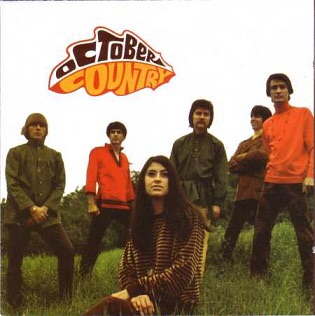
October Country was an American folk rock band formed in Los Angeles, California, in 1967. For musician Michael Lloyd, the group was one of his earliest projects with him assuming the role of record producer. It also was another side-project, along with the Smoke, California Spectrum, and the Fire Escape, during a period in which Lloyd was absent from the West Coast Pop Art Experimental Band. October Country recorded one self-titled album in 1968 and is best-remembered for the track "My Girlfriend Is a Witch". They are credited as the musicians for the Steven Spielberg short-film, Amblin'.
Shaun Harris is an American musician best-remembered as the bassist of the psychedelic rock band the West Coast Pop Art Experimental Band (WCPAEB). Throughout his music career, Harris worked closely with Michael Lloyd on projects outside the WCPAEB including the Rogues, California Spectrum, and Brigadune. In 1973, he recorded a self-titled solo album on Capitol Records.
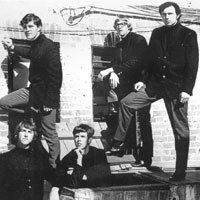
The E-Types were an American garage rock band formed in Salinas, California, in 1965. The group's sound combined striking three-part vocal harmonies and Jody Wence's jangling keyboards, with professional production techniques that were outside of the garage band norm. During the E-Types' recording career, the band released five singles, including their most notable record "Put the Clock Back on the Wall". Although the band was short-lived, the E-Types had a profound presence in San Francisco's live scene and, years after their disbandment, the group recorded a reunion album.

FiFo Records was an American record label established by singer-songwriters Bob Markley and Baker Knight in Los Angeles, California, in 1961. Following Markley's unsuccessful stint with Warner Bros. Records as a solo artist, he teamed up with Knight, a co-writer on both of Markley's two singles, to found the label, which recorded a variety of pop, R&B, and folk musical acts. FiFo is best-known, however, as the label that released the debut album by the psychedelic rock group the West Coast Pop Art Experimental Band in 1966.
John A. Ware is an American drummer and percussionist known primarily for his session and live performance work.
















